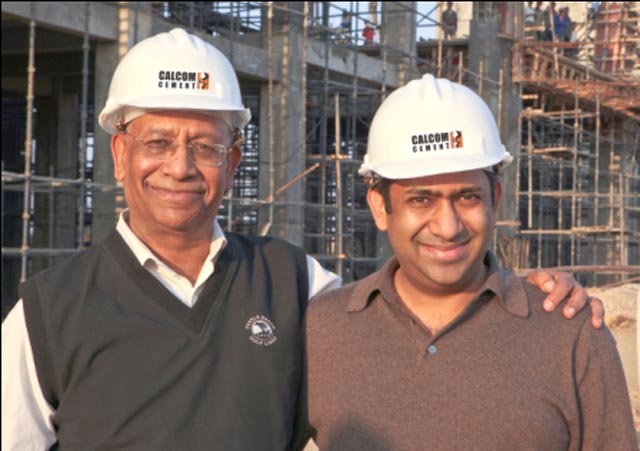Fixing U.S. Immigration
In a speech at the American University last Thursday, President Obama highlighted the incredible economic rewards that America has gained from its immigrants. He spoke of new waves of immigrants—from places like Ireland, Italy, Poland, and China—challenging the generations before them, and consequently being subjected to “rank discrimination and ugly stereotypes”.
Yet the immigrants kept coming to America. That’s because it was the only land of opportunity. The President wants lawmakers to fix the immigration system so that America can remain globally competitive. But I don’t think it’s that simple. America is no longer the only magnet for the world’s best and brightest. Fixing immigration policy is an important start, but it won’t be enough to stop the brain drain of highly educated and skilled workers that the U.S. is presently experiencing.
Just last week, there were two notable visitors to Silicon Valley—Russian President, Dimitry Medvedev, and Chile’s minister of Economy, Juan Andres Fontaine. President Medvedev wanted the brilliant Russian-born and -educated programmers who write some of the Valley’s most sophisticated software to know that they are welcome back home and that he is setting up a science park for them. Minister Fontaine wants to turn Chile into a tech hub and is following my advice on how to make this happen: by attracting immigrants; building a diverse culture that encourages risk-taking and openness; and creating networks of mentors.
Inviting Budding Entrepreneurs to Chile
Over drinks (some excellent Chilean wine), the minister told me of a new program that Chile is piloting to lure bootstrappers. Chile will grant $40,000 and provide some really cheap office space and accommodation to budding entrepreneurs from anywhere in the world. All they have to do is to build their products in one of the most beautiful locations on the planet. Chile is betting that once these entrepreneurs get there, they will never want to leave.
China is also doing all it can to get its scientists and engineers to come back home. It is spending billions of dollars to establish research institutes and build technical capacity. Returnees to China are now powering its most significant scientific breakthroughs. For example, according to the Washington Post, at the National Institute for Biological Sciences, which is responsible for half of the peer-reviewed publications in China, all of the key scientists are returnees from the United States.
India’s Returning Techies
I witnessed on my recent trip to India how much things had changed there, as well.
At Startup Saturday, which has become a regular hangout for tech entrepreneurs in Delhi, I gave a talk to a group of about 100 company founders. I was surprised at how similar they were to the techies I know in Silicon Valley: they are building the same types of products; have the same interests; ask the same questions; and, like their Valley brethren, complain that venture capitalists won’t give them the time of day. I learned that more than one-third of these entrepreneurs were returnees from the U.S. They went back for the same reasons that my research had highlighted: they missed their family and friends and saw greater opportunities in India than in the U.S. Now they are invigorating the entrepreneurial ecosystem back home.

The returning techies aren’t only building tech companies. After completing his MBA at the University of Michigan at Ann Arbor, Ritesh Bawri built a very promising product that could capture a customer’s real-time purchase intent. He had VCs lined up to provide funding but decided not to pursue this because he saw an even greater opportunity back home, in India. Among his father’s business interests was a cement business that produced $10 million a year in revenue. Ritesh knew that, with India’s need for infrastructure, there was almost unlimited potential for growth. But this would require tethinking production and distribution methods, importing new technologies from the west, and building the logistics infrastructure to consolidate the materials supply chain.
Ritesh returned home in 2003 and raised about $110 million in financing from financial institutions and private equity funds to purchase assets and build plants, and revamped the cement business’s operations and strategy. His bet paid off. His company, Calcom Cement, has become a hugely profitable $250 million business and expects to hit $2 billion revenue in 2016.
Some of India’s best and brightest won’t even consider moving to the US. Ashish Sinha started his career in 1999 at one of the first successful tech companies in India, called Aztec Software. Later, he worked for Ketera, IBM, and Yahoo, in India. He was offered several opportunities in the U.S., but believed his career would progress better in India. In 2007, Ashish started India’s TechCrunch—a site called PluGGd.in, which now draws 1.1 million visitors a month. Ashish takes a lot of pride in his decision not come to the U.S. as an H-1B worker. He says “I have seen a whole lot of my friends go to the U.S. for IT services/outsourcing jobs, and repent later as it hardly brings satisfaction to one’s soul”.
From Brain Drain to Brain Grab
Arvind Nigam and Praveen Kumar Sinha are in the process of moving their ideas – crowdsourcing software company called BubbleIdeas, to Singapore because the Indian Government places restrictions on Paypal types of transactions, and they want to be closer to western markets. When I told Arvind about Chile, he thought it would be an even better place to move to, because of its physical and cultural proximity to the US and Europe. I asked Arvind whether he had considered the US. His response: “Too expensive…and who needs to put up with the visa nightmares?”
The U.S. immigration debate is no doubt going to be contentious and get bogged down in the issue of providing amnesty to people who entered the country illegally. The reality is that, no matter how long the debate takes or how it concludes, the poor and unskilled will still be here. But the educated and skilled professionals—who could be creating new jobs and making the U.S. more competitive—won’t be here. They will, instead, be boosting the economies of other countries. The U.S. will need not only to change its immigration policies to welcome skilled immigrants, but also to keep those who are already in the U.S. And it will have to do what countries like China, Singapore, and Chile are doing: send its scouts out to find and recruit the best talent in other countries.
Vivek Wadhwa is an entrepreneur turned academic. He is a Visiting Scholar at UC-Berkeley, Senior Research Associate at Harvard Law School and Director of Research at the Center for Entrepreneurship and Research Commercialization at Duke University. You can follow him on Twitter at @vwadhwa and find his research at www.wadhwa.com.



